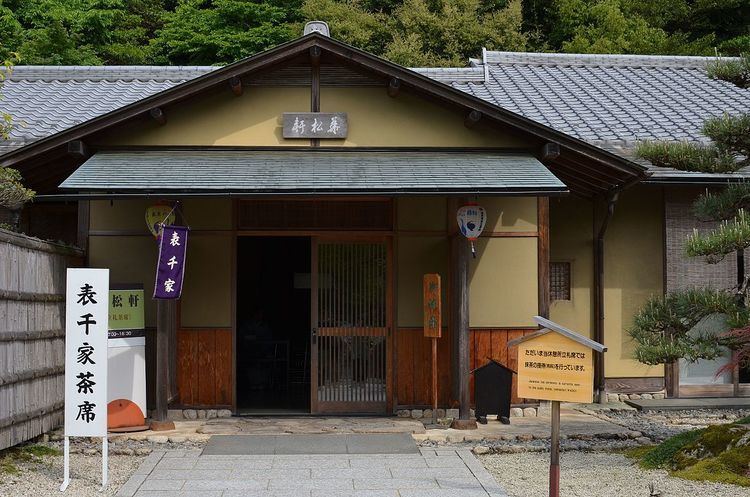Phone +81 75-432-1111 | ||
 | ||
Address Japan, 〒602-0072 京都府京都市上京区百々町536 Similar 表千家不審菴文庫, (社)茶道裏千家 淡交会総本部, Ōbai‑in, (社)表千家同門会 京都支部, 官休庵(武者小路千家) | ||
Cha no yu omotesenke
Omotesenke (表千家, lit. "front Sen house/family") is one of the schools of Japanese tea ceremony. Its name derives from one of the three houses or families (家) that count their family founder as Sen Rikyū and are dedicated to carrying forward the Way of Tea that he developed. The other two are Urasenke and Mushakōjisenke. The three are together referred to as the san-Senke (三千家; lit, "three Sen houses/families"). The hereditary name of the head (iemoto) of this line of the family is Sōsa.
Contents
The Omotesenke estate, known by the name of its representative tea room, the "Fushin-an" (不審庵), was where Sen Rikyū's son-in-law, Sen Shōan, reestablished the Kyoto Sen household after Rikyū's death. It is located on Ogawa street in the Kamigyō ward of Kyoto. Shōan's son Sōtan soon succeeded as the family heir and head of this estate. The next heir to the estate and family tradition was Sōtan's third son, Kōshin Sōsa, counted as the fourth generation in the Omotesenke family line. Sōtan, when he was ready to retire and gave the headship of the family over to Kōshin Sōsa, established his retirement quarters on adjacent property in the north, building a tiny tea room there, the "Konnichi-an" (今日庵). Eventually, Sōtan's youngest son, Sensō Sōshitsu, inherited that part of the estate, which came to be known as the home of the Urasenke.
There are small stylistic differences between the different schools. For example, the Omotesenke school whisks the tea less than the Urasenke school, creating less foam on the top of the tea. Also, Omotesenke uses both an untreated bamboo chasen and a susudake chasen, or darkened-bamboo tea whisk, while Urasenke uses untreated bamboo for its chasen or tea whisk.
The Fushin-an estate, where the 3rd generation, Sōtan, lived until retirement, is the home and headquarters of Omotesenke.
The Kitayama Kaikan in Kyoto is a relatively modern Omotesenke facility, where Omotesenke sponsors exhibitions, lectures, and other educational programs for the general public.
Licenses and course of study
Licenses or permissions are called kyojō (許状), menjō (免状) or sōden (相伝). They allow students to study certain tea procedures.
Warigeiko
The first skills a student in any Tea school learns are the warigeiko, literally divided or separate training. The warigeiko are skills practiced separately from actual temae (tea or charcoal procedures); since they form the basis of temae, they must be acquired before a student begins making tea. They include:
